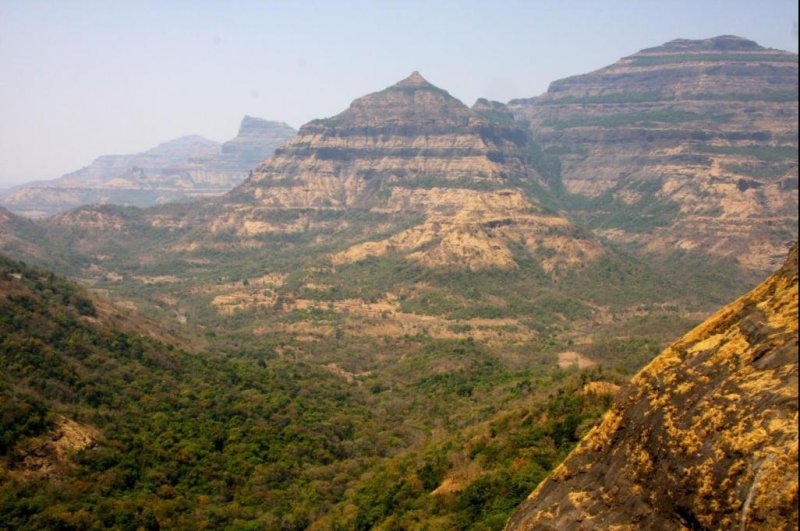1 of 2 | New dating analysis confirm the chronological proximity of Mexico's asteroid impact and India's advanced volcanism 66 million years ago. Photo by UC Berkeley/Mark Richards
BERKELEY, Calif., Oct. 1 (UPI) -- Some 66 million years ago, a massive asteroid struck Mexico's Yucatan peninsula, leading to several hundred thousand years of accelerated volcanism. It was this one-two punch, researchers argue in a new study, that killed off the dinosaurs.
The role these two global events played in snuffing out the dinosaurs has long been debated by scientists -- some minimizing the significant of the impact, others denying the relevance of volcanic eruptions.
But the most accurate data yet on the timing the two phenomena suggests the combination of impact and volcanic activity precipitated a climate inhospitable to the large reptiles. Researchers detailed the new findings in a paper published this week in the journal Science.
"Based on our dating of the lavas, we can be pretty certain that the volcanism and the impact occurred within 50,000 years of the extinction, so it becomes somewhat artificial to distinguish between them as killing mechanisms: both phenomena were clearly at work at the same time," lead study author Paul Renne, director of the Berkeley Geochronology Center, said in a press release. "It is going to be basically impossible to ascribe actual atmospheric effects to one or the other. They both happened at the same time."
Surprisingly, new analysis of the Deccan Traps lava flows show that volcanic activity actually slowed, but that each event released much more massive lava flows. The shift suggests the impact fundamentally altered the planet's magmatic plumbing.
For some 500,000 years, larger lava flows made life untenable for both dinosaurs and their successors. This gap between the decline of the dinosaurs and rise of large land mammals is known as the Cretaceous-Tertiary boundary, or K-T boundary.
"The biodiversity and chemical signature of the ocean took about half a million years to really recover after the K-T boundary, which is about how long the accelerated volcanism lasted," Renne said. "We are proposing that the volcanism unleashed and accelerated right at the K-T boundary suppressed the recovery until the volcanoes waned."
As more research confirms the proximity of the Chicxulub impact in Mexico, advanced volcanism in India and disappearance of the dinosaurs on the geologic timeline, scientists are forced to assume a relationship between the three.
Renne and his colleagues at the University of California, Berkeley are now working to better understand how impact events and violent ground shaking can influence the planet's volcanic systems.















